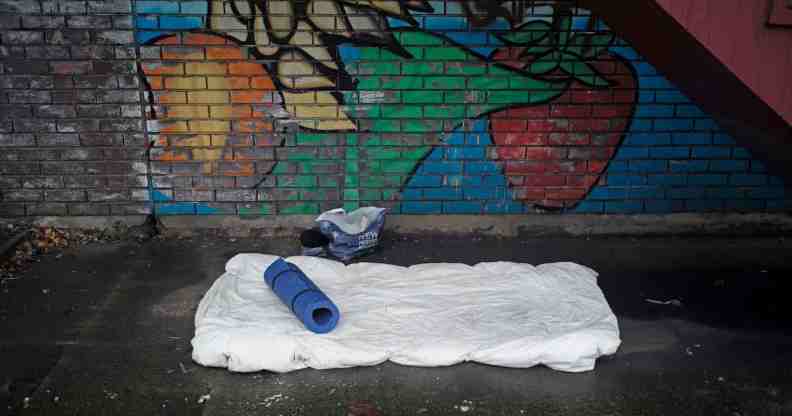Homeless LGBT youth more likely to be sex traffic victims, studies shows

Studies conducted by a US university show that homeless LGBT youth are at a higher risk for sex trafficking.
Covenant House International, the largest privately funded youth homeless shelter in the Americas, commissioned a study from Loyola University’s Modern Slavery Research Project (MSRP) on Labor and Sex Trafficking Among Homeless Youth.
The research shows that homeless LGBT youth are disproportionately affected by sex trafficking.
The MSRP interviewed 641 young adults aged 17-25 from ten cities across the US and Canada.
Nearly one in five (124) were identified as victims of some form of human trafficking.
The Trafficking Victims Protection Act (TVPA), defines sex trafficking as “the recruitment, harbouring, transportation, provision, or obtaining of a person for the purpose of a commercial sex act induced by force, fraud, or coercion, or in which the person induced to perform such act has not attained 18 years of age.”
Of the 124 trafficking victims, 74 percent reported being trafficked for sex, 41 percent for labor and 17 percent for both sex and labor.
Of the 92 young people trafficked for sex, over a third identified as LGBT.
Half of the LGBT youth interviewed reported they engaged in the sex trade in some way during their lifetime.
Homeless youth are more vulnerable to sex and labor trafficking because they experience a high rate of trafficking risk factors.

These include: poverty, a history of mental health problems and sexual abuse, unemployment and unstable home lives.
Those interviewed expressed that they struggled to find paid work, housing and support systems once they were on the streets.
Traffickers prey on these factors and manipulate them to turn to the sex trade for survival.
Another Covenant House study commissioned from The University of Pennsylvania’s Field Center for Children’s Policy, Practice and Research interviewed nearly 270 youth in Phoenix, Pensilvania and Washington, DC.
Nearly one fifth of those interviewed were victims of sex trafficking.
39 percent of those trafficked for sex identified as LGBT.
Both studies also show that homeless transgender youth have the highest rates of sex trafficking within any demographic.
The Field Center reported that 60 percent of the youth involved in sex trafficking identified as transgender. 56 percent involved in the MSRP study reported the same.
Both studies mention that the sample for trans youth was too small to make a conclusive statement about this data. Although they did expressed that it could indicate an important and concerning trend.

